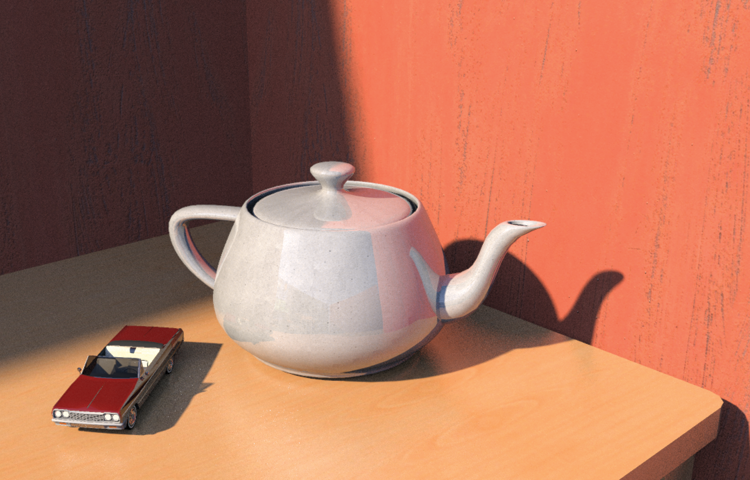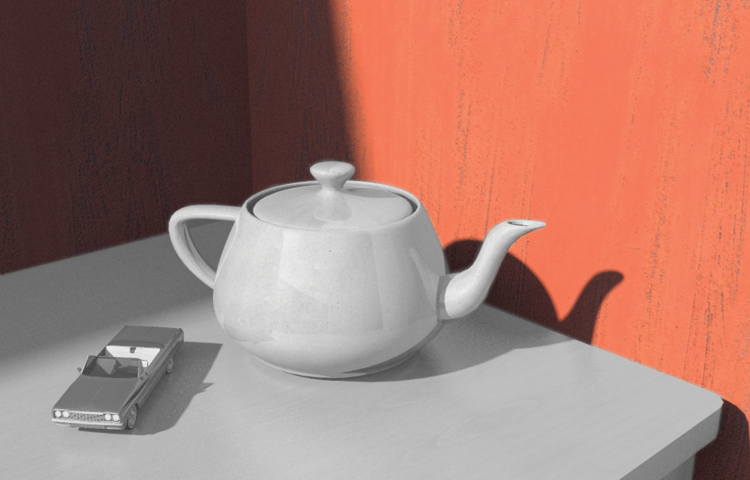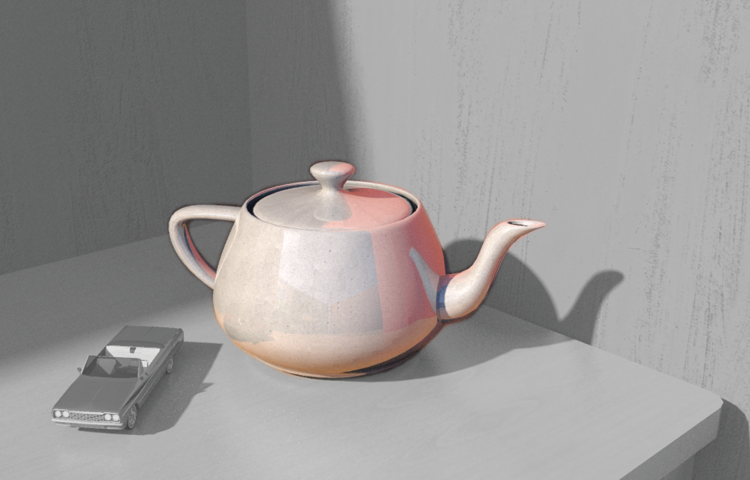Surface Condition and Surface Reflection
Surface condition and reflection define the most predominant values applied to model textures. The concepts behind these terms are described here.
Surface Condition
Surface condition defines how reflective, diffuse, bright, or muted a surface is. The smoother the surface, the more it reflects light and its environment. Uneven surfaces diffuse more light along their surface, providing little to no reflection (Fig. 21.16).
For example, painted surfaces possess an irregular, coarse condition. Thus, painted surfaces reflect little if any of their surroundings (Fig. 21.17) in contrast to porcelain or plastic surfaces, which have smoother conditions and reflect more of the environment (Fig. 21.18, Fig. 21.19).
Fig. 21.16: Different surfaces and surface conditions

Fig. 21.17: Rendered image highlighting the painted wall with no reflections and a coarse appearance

Fig. 21.18: The porcelain has a subtle but visible reflection in this rendered image highlighting the porcelain on the Utah teapot.

Fig. 21.19: The wood on the table has a limited but noticeable reflection.
Many surfaces can have a wide range of conditions. For example, wood can ...
Get Rendering in SketchUp: From Modeling to Presentation for Architecture, Landscape Architecture and Interior Design now with the O’Reilly learning platform.
O’Reilly members experience books, live events, courses curated by job role, and more from O’Reilly and nearly 200 top publishers.

